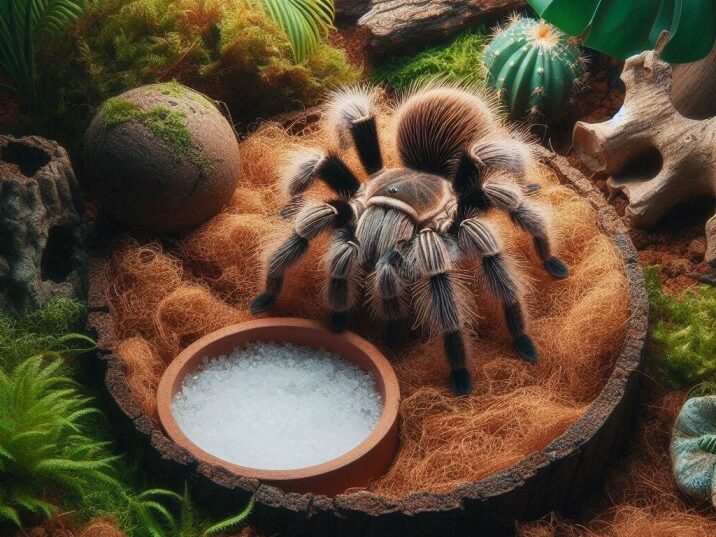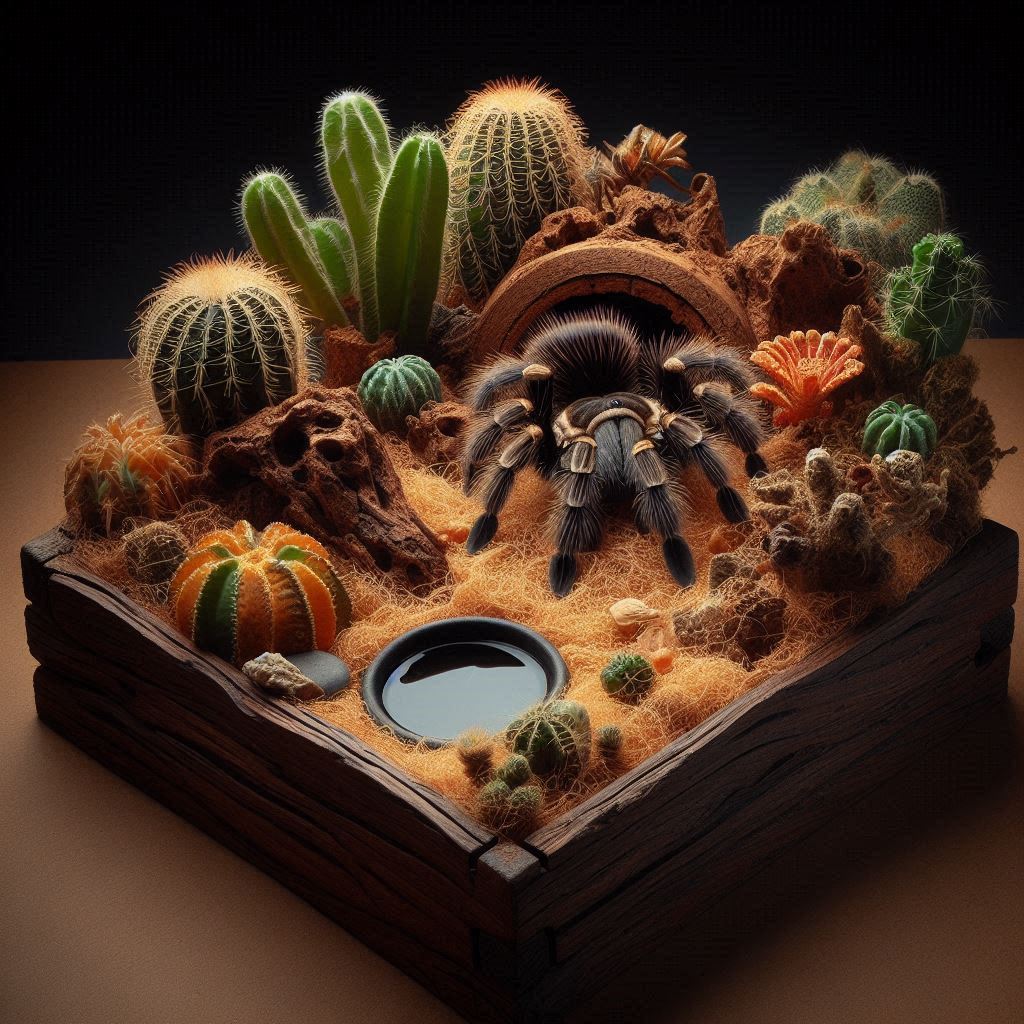Creating the perfect fossorial tarantula enclosure can be both exciting and rewarding. These burrowing spiders have unique needs, and setting up their habitat correctly ensures they live happy, healthy lives. In this guide, we’ll dive deep into everything you need to know about building the ideal home for your fossorial tarantula.
Introduction
Table of Contents
Fossorial tarantulas, known for their burrowing behavior, require special enclosures that mimic their natural underground habitats. Understanding their needs and preferences is crucial for anyone looking to keep these fascinating creatures. Whether you’re a beginner or an experienced tarantula keeper, this guide will help you set up the perfect fossorial tarantula enclosure. We’ll cover everything from selecting the right enclosure to creating a comfortable and safe environment for your pet.

Why Choose a Fossorial Tarantula?
Fossorial tarantulas are unique and captivating pets. Their burrowing behavior provides an interesting glimpse into the natural world. These spiders are generally less visible than arboreal or terrestrial tarantulas, but their fascinating digging activities make them worth the effort. Let’s explore why these tarantulas are a great choice:
- Interesting Behavior: Watching your tarantula dig and create intricate burrows is both educational and entertaining.
- Low Maintenance: Once their enclosure is set up, fossorial tarantulas are relatively easy to care for.
- Unique Species: Many fossorial tarantulas have striking colors and patterns that make them visually appealing.
Choosing the Right Fossorial Tarantula Enclosure
The first step in creating a perfect home for your fossorial tarantula is selecting the right enclosure. Here are some key factors to consider:
Size
Fossorial tarantulas need enough space to burrow and move around. A 10-20 gallon tank is generally sufficient for most species.
Table of Enclosure Sizes:
| Tarantula Size | Recommended Enclosure Size |
|---|---|
| Small | 5-10 gallons |
| Medium | 10-15 gallons |
| Large | 15-20 gallons |
Material
Glass and plastic are the two most common materials for tarantula enclosures. Both have their pros and cons:
- Glass: Provides clear visibility but can be heavy and breakable.
- Plastic: Lightweight and durable but may not offer the same level of clarity as glass.
Ventilation
Proper ventilation is essential to prevent mold and ensure a healthy environment for your tarantula. Look for enclosures with secure lids that allow for adequate airflow.
Setting Up the Enclosure
Now that you’ve chosen the right enclosure, it’s time to set it up. Here’s a step-by-step guide:
Substrate
The substrate is a crucial element of a fossorial tarantula enclosure. It should be deep enough to allow for burrowing.
Recommended Substrate Materials:
- Coconut fiber: Retains moisture and mimics natural soil.
- Peat moss: Good for holding humidity.
- Topsoil: Provides a natural feel but may contain insects.
Depth: Aim for at least 6-8 inches of substrate.
Hides
Providing hides is essential for the well-being of your tarantula. These can be natural or artificial and should be placed at various points within the enclosure.
- Natural Hides: Cork bark, hollow logs.
- Artificial Hides: Plastic or ceramic caves.
Water Source
A shallow water dish should always be available. Ensure it’s not too deep to prevent drowning and change the water regularly to maintain cleanliness.
Temperature and Humidity
Maintaining the right temperature and humidity levels is vital for the health of your fossorial tarantula.
Temperature
- Daytime: 75-85°F
- Nighttime: 70-75°F
Use a reliable thermometer to monitor these temperatures and make adjustments as necessary.
Humidity
Fossorial tarantulas thrive in environments with 70-80% humidity. This can be achieved by misting the enclosure regularly and using a hygrometer to keep track of humidity levels.
Feeding Your Fossorial Tarantula
Diet plays a crucial role in the health of your tarantula. Here’s what you need to know about feeding:
Diet
- Insects: Crickets, roaches, mealworms, and superworms are excellent choices.
- Frequency: Young tarantulas (slings) should be fed more frequently, while adults can be fed once a week.
Water
Ensure your tarantula always has access to fresh water. A shallow dish is ideal to prevent drowning.
Handling and Interaction
While fossorial tarantulas are generally not recommended for handling due to their skittish nature, there are ways to interact safely:
- Observation: Spend time watching your tarantula’s activities.
- Maintenance: Gently move your tarantula if necessary, using a soft brush.
Common Issues and Solutions
Even with the best care, you might encounter some common issues. Here are a few and their solutions:
Mold Growth
- Cause: Excessive humidity and poor ventilation.
- Solution: Improve airflow and reduce misting.
Refusal to Eat
- Cause: Stress, pre-molt phase, or improper environment.
- Solution: Check environmental conditions and reduce stress factors.
Conclusion
Creating the perfect fossorial tarantula enclosure is a rewarding experience. By following this guide, you can ensure your tarantula has a safe, comfortable, and stimulating environment. Remember to monitor the enclosure regularly and make adjustments as needed. With the right care, your fossorial tarantula will thrive and provide you with years of enjoyment.
FAQs
1. How deep should the substrate be in a fossorial tarantula enclosure? The substrate should be at least 6-8 inches deep to allow for proper burrowing.
2. What is the ideal temperature range for a fossorial tarantula? The ideal temperature range is 75-85°F during the day and 70-75°F at night.
3. How often should I feed my fossorial tarantula? Young tarantulas should be fed more frequently, while adults can be fed once a week.
4. Can I handle my fossorial tarantula? Fossorial tarantulas are generally not recommended for handling due to their skittish nature.
5. What should I do if mold starts growing in the enclosure? Improve ventilation and reduce misting to prevent mold growth.

